How to Grow Garlic | An Essential Guide to Successfully Planting Garlic
Planting Garlic can easily become a plant-it-and-forget-it type of crop. It’s one of those plants that can grow year after year!
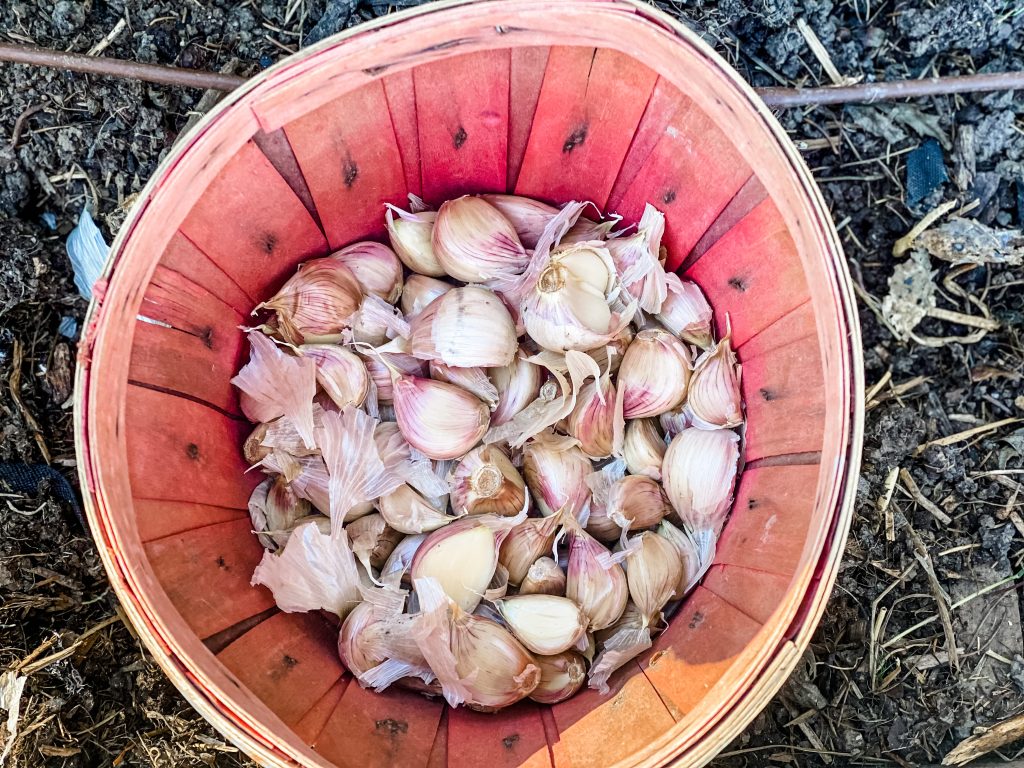
This Post May Contain Affiliate Links. Please Read Our Disclosure Policy.
After years of experimenting with many different growing areas and making tons of mistakes like planting the garlic bulbs in the spring :/ I have finally fine-tuned my garlic planting skills. Read on to streamline your garlic growing experience!
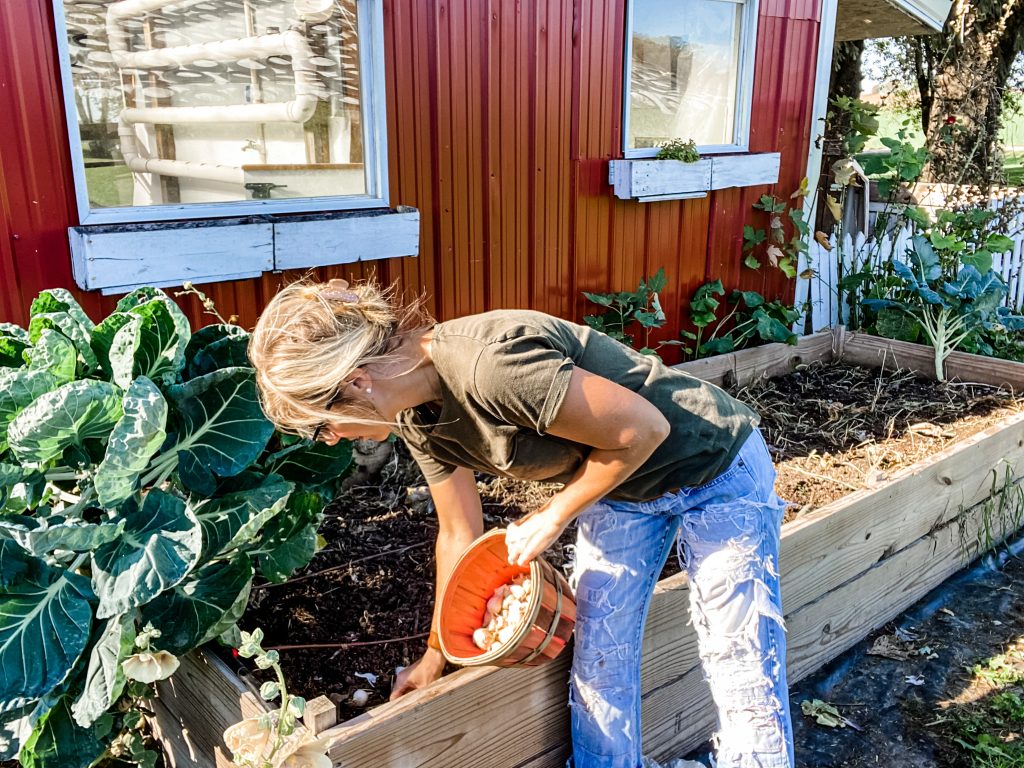
Why didn’t my Garlic Grow this year?
I have had tons of people come up and ask me, recently ‘how come my garlic didn’t grow this year when I planted it in the spring with my daffodils and tulips?’ I say, there’s your first mistake.
Many big box stores get garlic bulbs in with tulips, rhubarb plants and horse radish root in the spring and this sends the wrong message about planting garlic. Garlic needs a long growing season (about 9 months!), so planting it even in early spring just doesn’t give it enough time in the ground.
What to know before you Grow your own Garlic!
Some things are better not grown next to this Bulb
There are only few things you should not grow next to garlic because it tends to compete for the same resources.
- Asparagus
- Beans
- Parsley
- Peas
- Sage
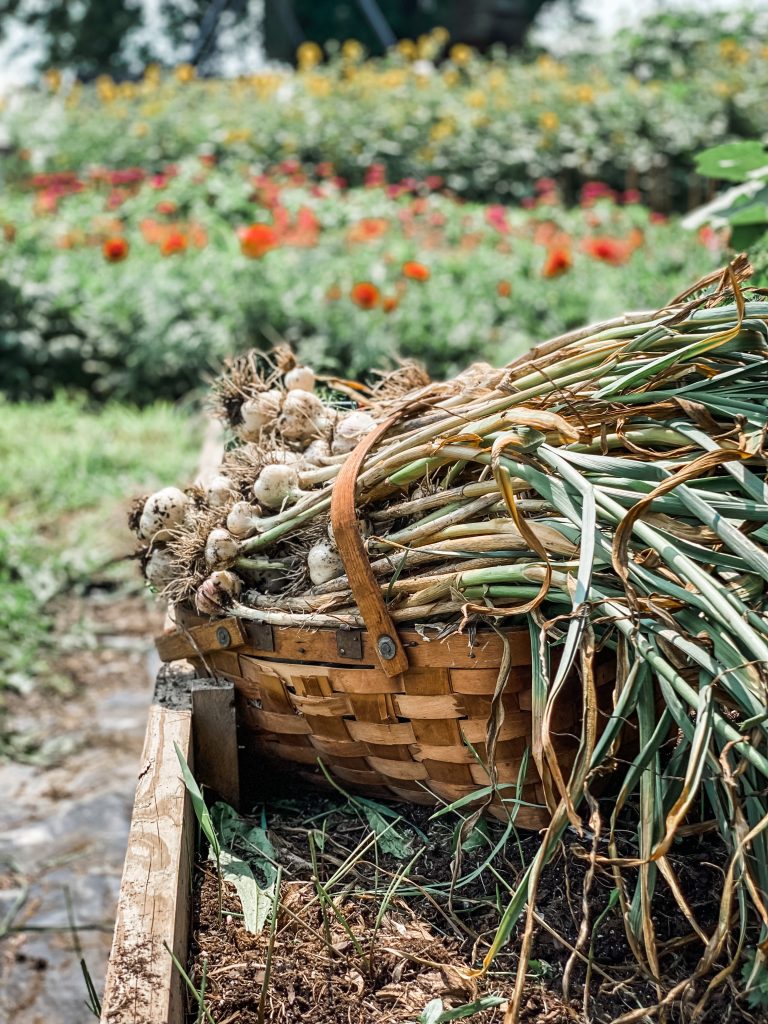
Companion Plants to Garlic
A companion plant is a great way for plants to mutually benefit from each others natural traits to support each others’ growth.
Basically speaking, this means that planting things intentionally in the same raised bed or nearby so that the surrounding vegetation will thrive or offer some mutual benefits.
- Dill
- Beets
- Kale
- Spinach
- Potatoes
- Carrots
- Eggplant
Garlic is a Neighborly Bulb
Here are the 3 main roles that garlic and its companions can play when planted together:
- Pest repellents: the strong garlic aroma can repel many insect pests.
- Fungal repellents: the sulfur in the bulb is know to repel many types of soil-born fungi and fungal diseases.
- Ground cover providers: some low growing plants ground cover to keep garlic free from weeds.
The bulb also attracts predatory and beneficial insects, such as ladybugs, wasps and lacewings.
If you love chamomile, try planting it next to your garlic, it is said to improve the flavor of the aromatic bulb!

Making Space for Friends
Some of the plants that are most beneficial to the bulb are planted in the spring, so you’ll want to plan and space out your plot accordingly.
If you plant your cloves in the fall, leave room to add spring-planted companions in March, April and May. We love growing spring spinach, radishes and spring onions.
Here in growing zone 4B, we plant garlic in the fall and harvest in mid-July.
When planting Garlic, you can Seed Save!
I have had years of reusing/ seed-saving my own bulbs. Ten years ago, when I started growing garlic, my only intent was to double my seed production for the following year. The next year, I sold/used 1/4 of my crop and saved the rest for seed.
At most I was putting in about 100 cloves, selling or braiding 50 bulbs. I love that this method leaves me feeling completely self-sustaining.

Why You’ll Love Planting Garlic
- Garlic is a quick and simple bulb to grow. Once you get it down, it is one of the easiest crops to work with because you can plant it fall and can essentially leave it alone until the following summer
- It a great plant-it-and-forget it kinda plant. Plant it in the fall go hibernate in your house and watch it magically appear the following spring!
- Garlic is a super food there are so many health benefits to eating and consuming it.
When to Plant Garlic
Here in Southeastern Minnesota (zone 4B), garlic can be categorized as a fall planting crop. We plant in late fall. I like to plant just before I can start to see frost in the forecast. Don’t worry, though, if you have had a frost or two, you are still good to go to get those babies in the ground safely. As long as you get them in before the ground freezes and you can push them into the dirt you will be fine!
Garlic needs about 9 months to grow, just like a little baby!
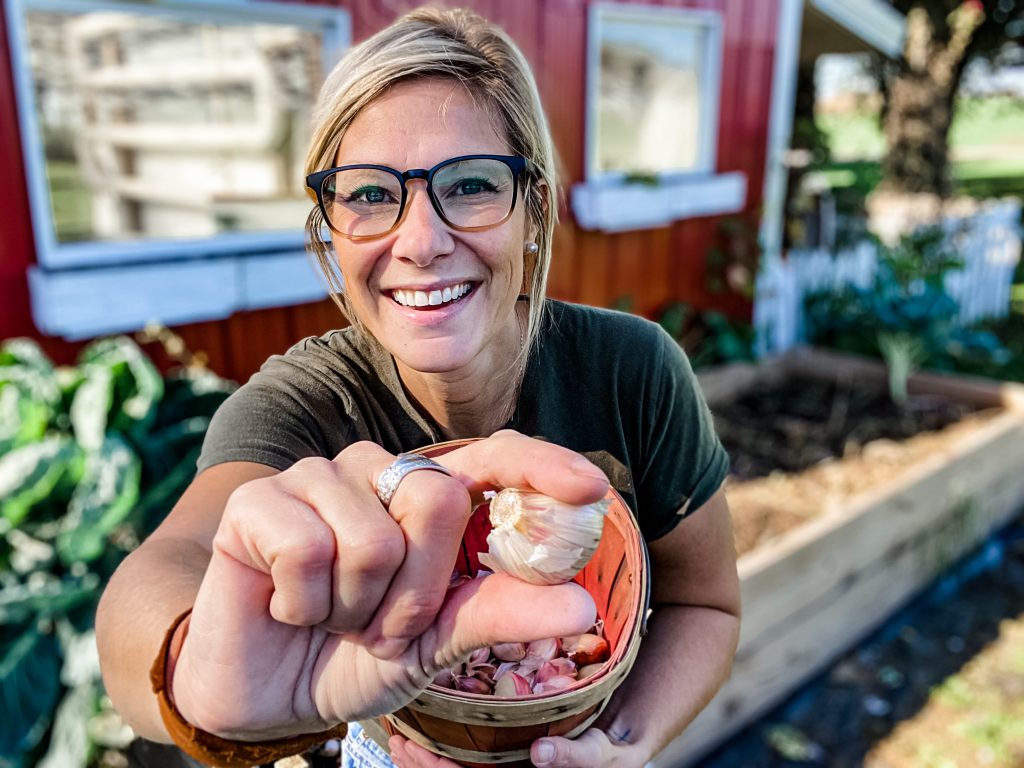
Where to Plant
Full sun, well-drained soil.
Like most bulbs, these bulbs don’t like getting too wet. Plant them in a dry place where they can’t be disturbed for nine months. Think about where you’ll be tilling in the spring and mark your area.
I used to plant my garlic right in our field, however, I decided this past few years to grow mine in our raised beds for several different reasons. The most important being that I may or may not be the one working up the gardens in the spring and I wanted to protect my garlic babies. The raised bed is fantastic for keeping the garlic safe and contained. This system also allows for great crop rotation in our vegetable garden – It also allows me to easily harvest the garlic in mid-July and then place our fall and winter produce such as broccoli, red cabbage, brussel sprouts, etc. right into the bed.
Learn how we set up our raised beds here!
Which Variety of Garlic Should I Plant?
There are two different varieties of garlic plants.
Hardneck garlic are better for cold Northern places. With the hardneck varieties, the bulbs are typically larger with smaller cloves plus you get scapes!
Softneck garlic is better for mild climates. The softneck varieties are optimal for garlic braids and having larger cloves in a smaller bulb.
We grow hardneck here, but I still braid it!
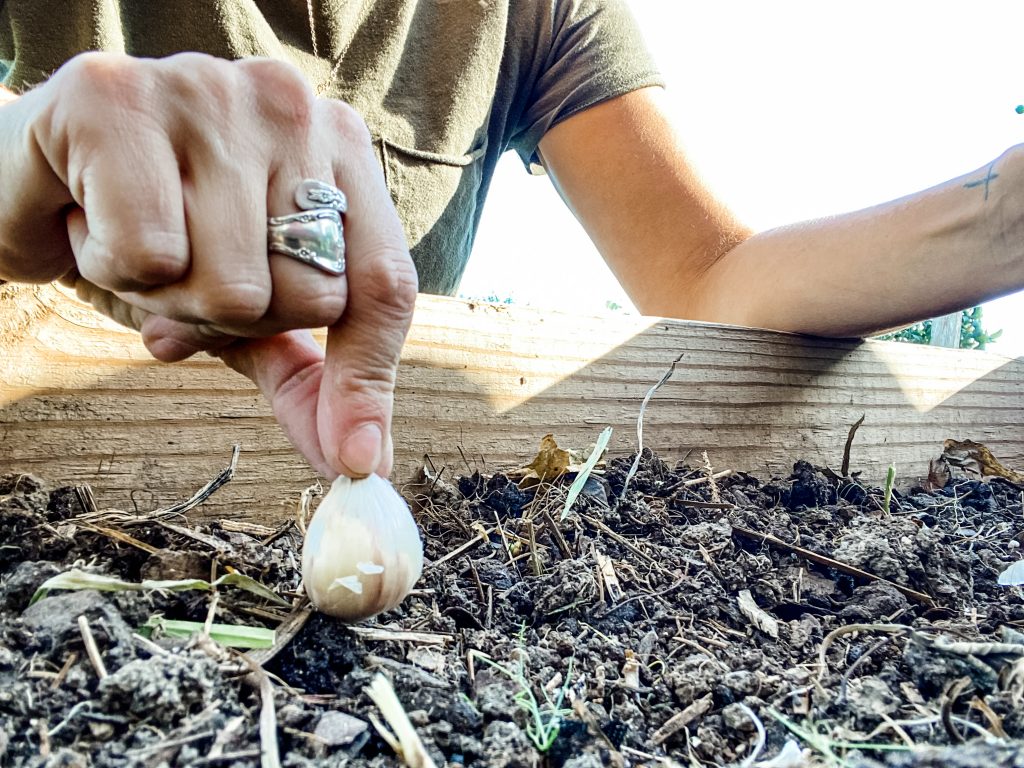
How to Plant
First, separate all the garlic cloves from the bulb and discard the center stem. I then take a garden fork to make sure there is loose soil in my raised bed. There’s no need to remove the papery skin before pushing the clove in pointy end up into the dirt about 1″. Place the individual cloves into the dirt with the roots to the bottom and the sprout on the top. Plant 4 – 6 inches apart and cover lightly and tamp down with your hand.
A Few Tips for Success!
- The bulb size is determined by the size of the garlic clove. The larger the clove, the larger bulb you will end up with.
- Some folks, like my friend Martha (Stewart) swear by soaking your cloves overnight in fish emulsion before planting. I have never done this and have had success, but just in case you’ve struggled with growth- give this a try!
- If your soil needs a boost of nitrogen, fertilizing in the spring with dry manure or blood meal can help grow your bulbs.
- Stop watering 1 month before harvest and use grass clipping to decrease weed growth.
- If you are growing the hardneck type, harvest the garlic shoots and get your scapes mid spring so they don’t steal development away from your bulbs.
Questions People are Asking about Garlic:
When I first started out, I purchased some garlic from a neighbor. I would try to source locally first. Try a neighbor who gardens or a local farmers market. Remember you don’t have to start with a ton in order to grow seed for next year. It’s a good idea to buy your garlic locally, when getting garlic seeds from a grocery store you run the risk of them being dried out and/or sprayed with chemicals. One bulb may give you 5-8 cloves a piece. Seed Savers has always been a reliable source for garlic seed. You can also purchase it from Country Creek Store on Amazon too.
Here in zone 4B (cold climates) we generally harvest in mid July, but make sure you can identify the signs of this crop being ready. This post discusses all the things you need to know about harvesting garlic.
If you are like us and love to enjoy garlic throughout the fall and winter months, you can either braid your garlic or store it in a breathable basket or mesh bag in a darker part of your home. Keeping garlic out of direct sunlight is important to preserve its taste
Garlic needs to be planted in a sunny spot. Without full sun, your garlic will be less flavorful and will turn out to be a smaller bulb.
Pin This for Later
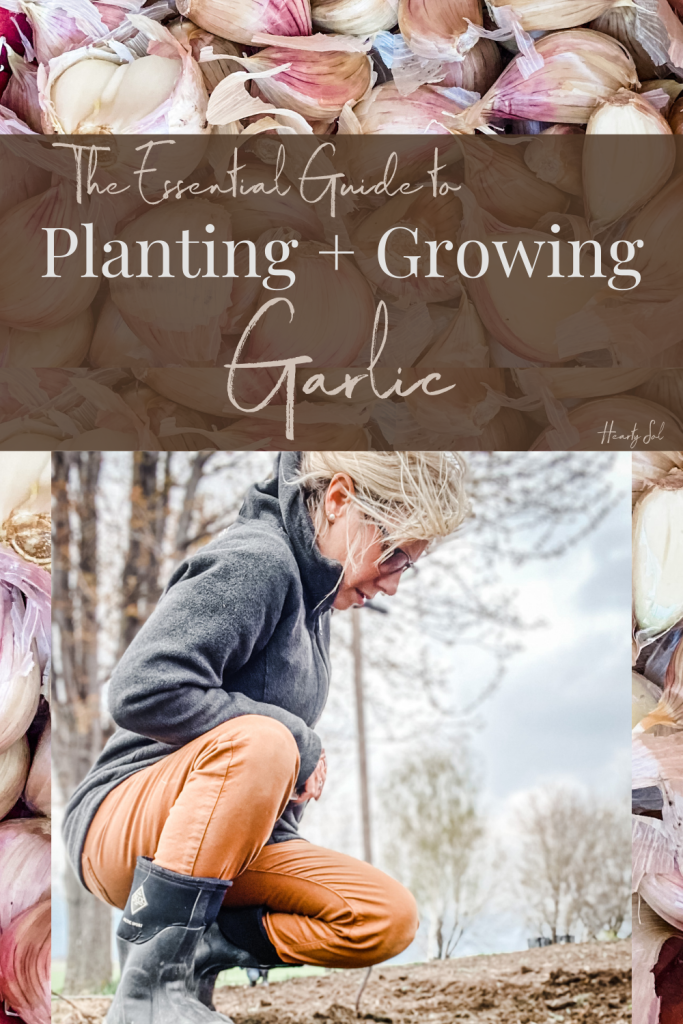
“We love having something to look forward to in the Winter months when we can’t get outside as much. This sewing series was just what we needed to kick start our new hobby!”
Check out our other Garlic Blogs!
Making Garlic Powder from Scratch
Use Garlic Scapes to make Garlic Scape Compound Butter
Other Hearty Posts
- Screen-Free Ideas for the “Week of Nothing” between Christmas and New Years
- How to Make Authentic Norwegian Lefsa
- How to Make Beautiful Whole Slit Mandarins for Winter Decorating
- 21 Simple Habits to Help you Find Calm and Take Back Your Day
- Homemade Holiday Custard Hand Pies | A Nostalgic Treat

Affiliate Disclosure & Content Disclaimer
This post may contain affiliate links from a paid sponsor, Amazon or other program. When you use these links to make a purchase I earn a small commission at no extra cost to you. This allows me to continue creating the content that you love. The content in this article is created for information only and based on my research and/or opinion.
Emily T.
DAILY INSPIRATION ON THE GRAM @hearty.sol
it's hip to be square!
View comments
+ Leave a comment